Newport is full of history. Take a tour of the city's oldest still-in-use homes
In a city absolutely packed with history, some of the oldest houses are owned by your next door neighbor.
Newport is famous for its colonial buildings, many of which date back to before the country was even founded in 1776. However, as many of these older properties are purchased and restored by preservation-minded organizations, others still are used as homes for Newport residents.
Capt. John Mawdsley House (228 Spring St.)
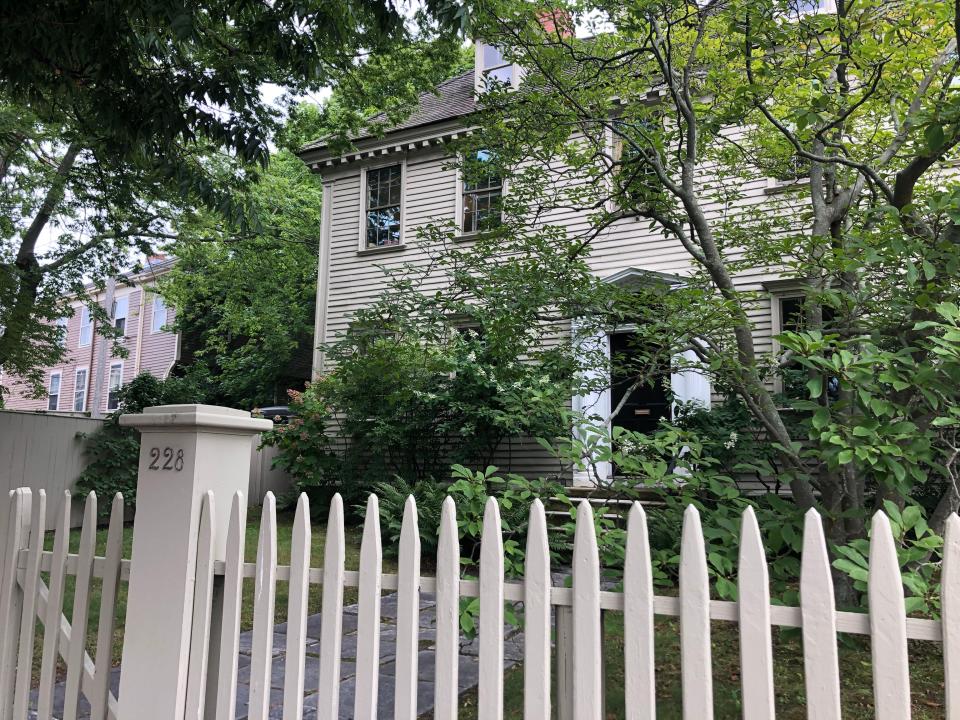
Before 1680
Just across the street from the iconic neighborhood diner Franklin Spa sits an unassuming white colonial home surrounded by lush trees and greenery. This house is one of the oldest in Newport, with the rear portion of the building dating back to before 1680. Historians believe it was built by Jireh Bull, son-in-law to the first governor of the Rhode Island colony, Benedict Arnold, whose great-grandson is the infamous General Benedict Arnold who had betrayed the American army during the revolutionary war.
What's Great Off 138: Learn about Tiverton's colonial history at Chace-Cory House in Four Corners
Capt. John Mawdsley lived in the house during the 18th century and constructed a large addition to the front. The building was added to the National Register of Historic Places in 1983 when it was owned by the Society for the Preservation of New England Antiquities, now called Historic New England. The nonprofit sold the property to the current owners Betsy D. Ray and Frank M. Ray for $35,000 in 1976, the equivalent of $200,729.61 today. The property is currently assessed to be worth $1.3 million.
John Bliss House (2 Wilbur Ave.)
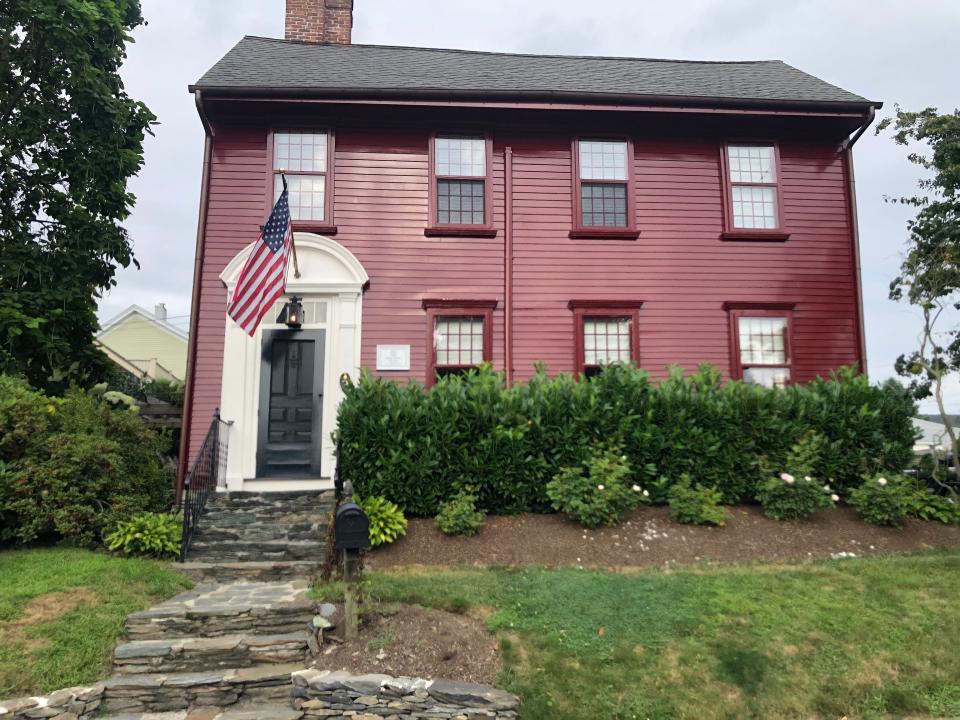
1679/1680
The Mawdsley House is not the only historical property in Newport related to Gov. Benedict Arnold, either. Arnold deeded the land to another son-in-law, John Bliss, who built this farmhouse in 1680. The property is one of the last remaining examples of a stone-ender, a historic architectural style unique to Rhode Island which features one side entirely made of chimney stone.
The property was in the spotlight in 2018 when it was up for sale for $825,000 and later in 2022 when the current owners, Ryan and Monika Miller, discovered a historic cannonball on the property.
Lucas–Johnston House (40 Division St.)
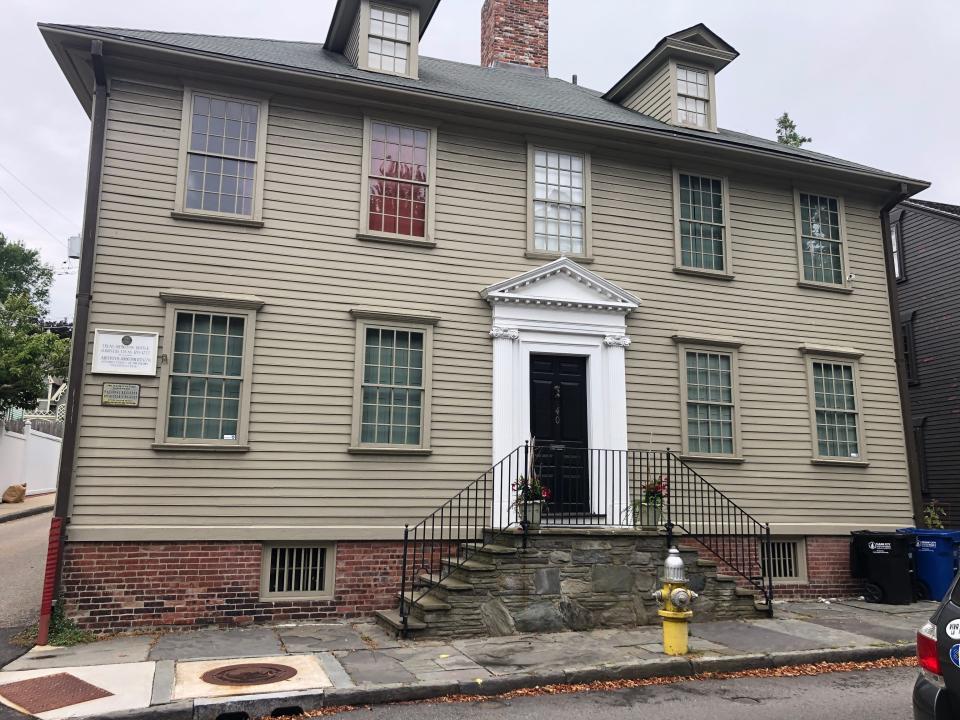
1720
This large colonial home on Division Street was registered with the National Register of Historic Places in 1971. It was the home of Augustus Lucas who purchased the land around 1711 and built the home around 1720, according to Historic New England, however, dendrochronology dates the wood of the property from as early as 1650 to as late as 1759, the latter date of which is more consistent with the exterior appearance of the building according to The Oxford Tree-Ring Laboratory. Lucas gave the house to his grandson, Augustus Johnston, sometime before 1765. Johnston would later become the city’s Stamp Master, the person in charge of enforcing the Stamp Act of 1765, which was the first direct tax placed on the American colonies. In protest of the Stamp Act, Newporters hanged effigies of Johnston and two other stamp distributors and rioted outside Newport Colony House until Johnston signed a document agreeing to not act as stamp distributor without the colonists’ consent. Johnston later became Attorney General in 1758 and is the namesake of Johnston, Rhode Island.
The home is currently owned by Diana Pearson, whose late husband Nicholas B. Scheetz purchased the property in 1999 and won an award for its renovation and preservation. Pearson established a Preservation Restriction Agreement on the property with Historic New England in April 2023.
Sculpture commission: Commission proposed to maintain Newport statues. But Columbus statue controversy emerges
Rev. Daniel Wightman House ( 6 Coddington St.)
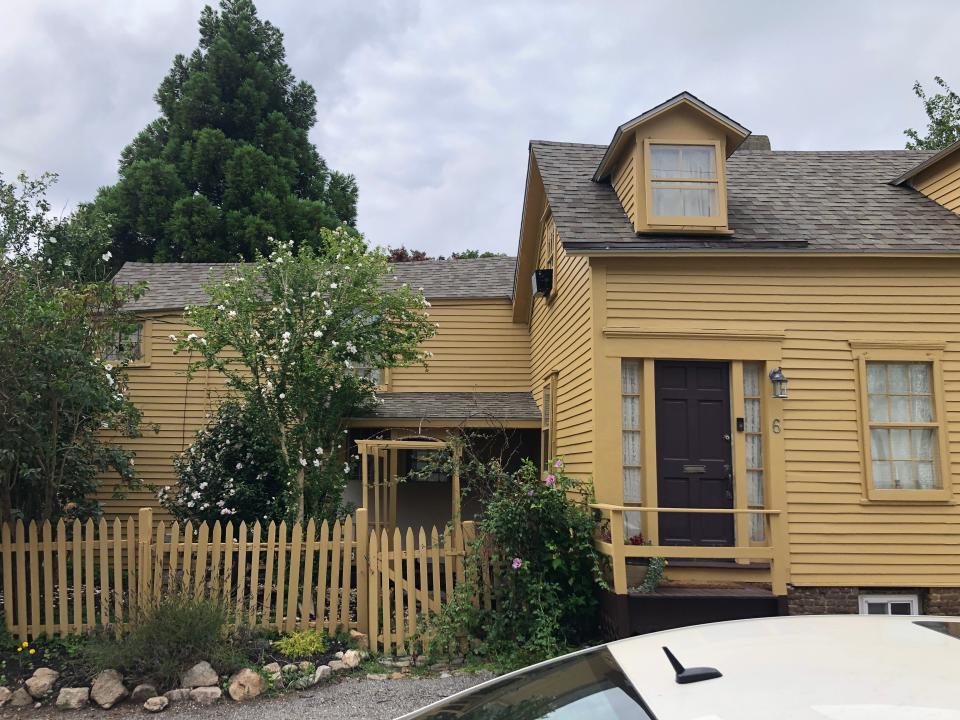
1721
Wightman was a carpenter-turned-minister who moved to Newport as early as 1694, purchased the land from Nathaniel Coddington and built this house around 1721. He was one of the 21 persons who broke off from the First Baptist Church of Newport and established the Second Baptist Church.
Not much else is documented on the history of the property. The current owners purchased the house in 2011 for $264,000.
Neptune Thurston Home (41 Walnut St.)
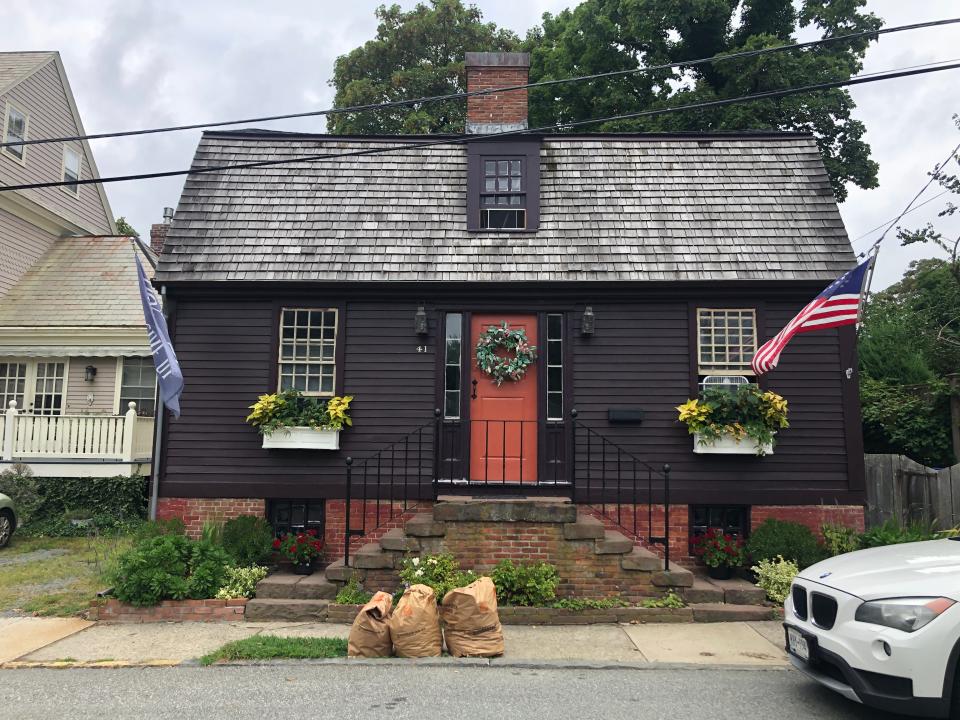
1734
This historic property was the home of former African slave Neptune Thurston. Thurston was a craftsman who worked with copper and portraiture throughout the 18th century. Not much else is documented about this home’s history. Its current owners purchased the property in 2019 for $587,000.
Honorable mentions
While these homes are not currently used as residences, their historic use as houses previously makes them remarkable in their own way.
Gov. Peleg Sanford House (2-4-6 Broadway)Sometime between 1640 and 1701
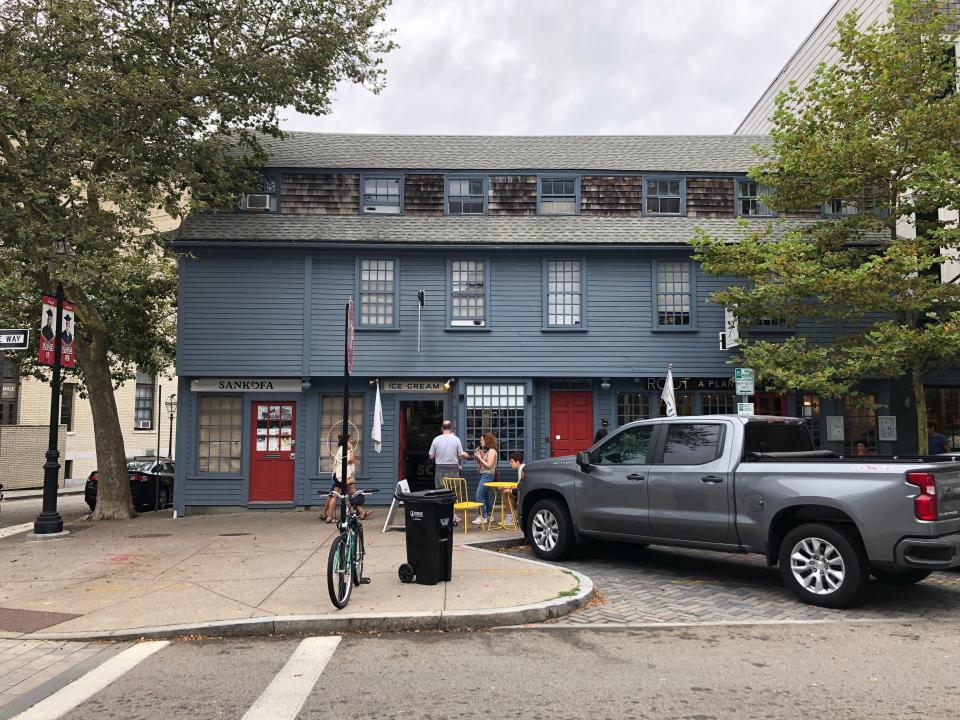
While no longer used as a residential home, the Gov. Peleg Sanford House is one of the oldest houses in Rhode Island. The property sits on the corner of Farewell and Broadway and serves as the storefront for several businesses. Sanford, who served as governor of the then-colony of Rhode Island between 1680 and 1683, built the house sometime before his death in 1701. Historical records indicate the building may be as old as 1640. The storefronts were added to the building by 1827 and it housed the “Lalli’s” variety store for 63 years from 1923 to 1986. Frank Lalli Jr. sold the property to its current owner, Bakleh LLC, for $950,000 in 2015.
History lost: Zoning board rules on plans to demolish 230-year-old Newport home
Wanton-Lyman-Hazard House (17 Broadway)1697
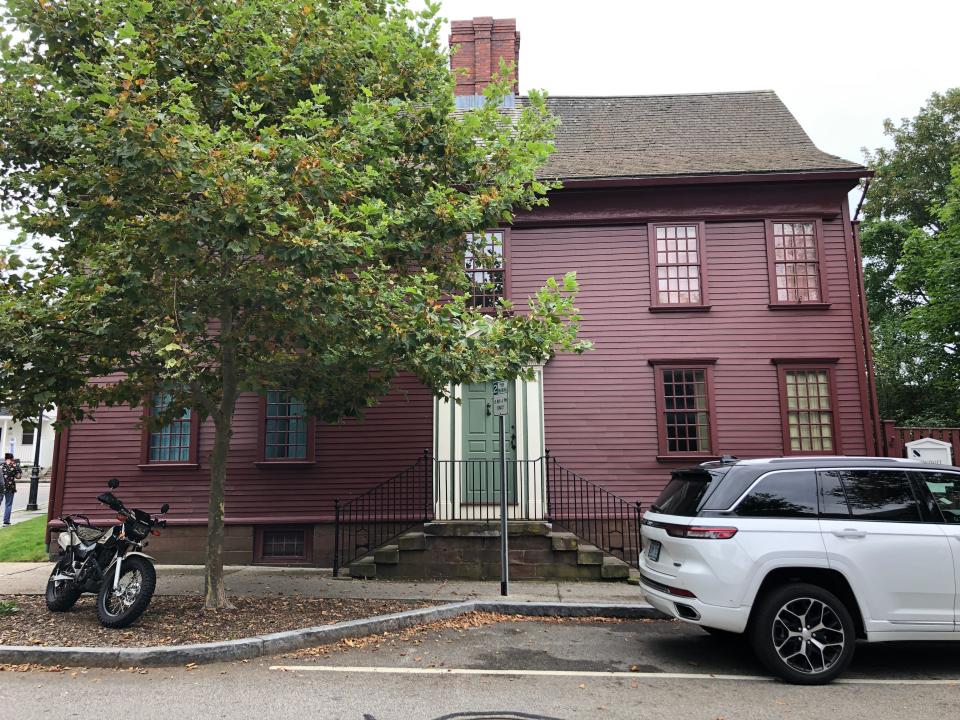
This large red colonial building is not currently owned and lived in by a private citizen, but rather, one of Newport’s history-focused nonprofits. It was built for Stephen Mumford, a merchant and a founding member of Newport’s Seventh Day Baptist congregation, in 1697 and was later sold to Gov. Richard Ward, who led the colony in 1741.
The Wanton-Lyman-Hazard House is one of several properties owned and maintained by Newport Historical Society, which purchased the property in 1927 from restoration architect Norman Isham. The organization has an extensive history of the property on its website.
'It’s a piece of history': A homeowner's fight to save one of Newport's oldest buildings
Simon Peace House (32 Clarke St.)1700
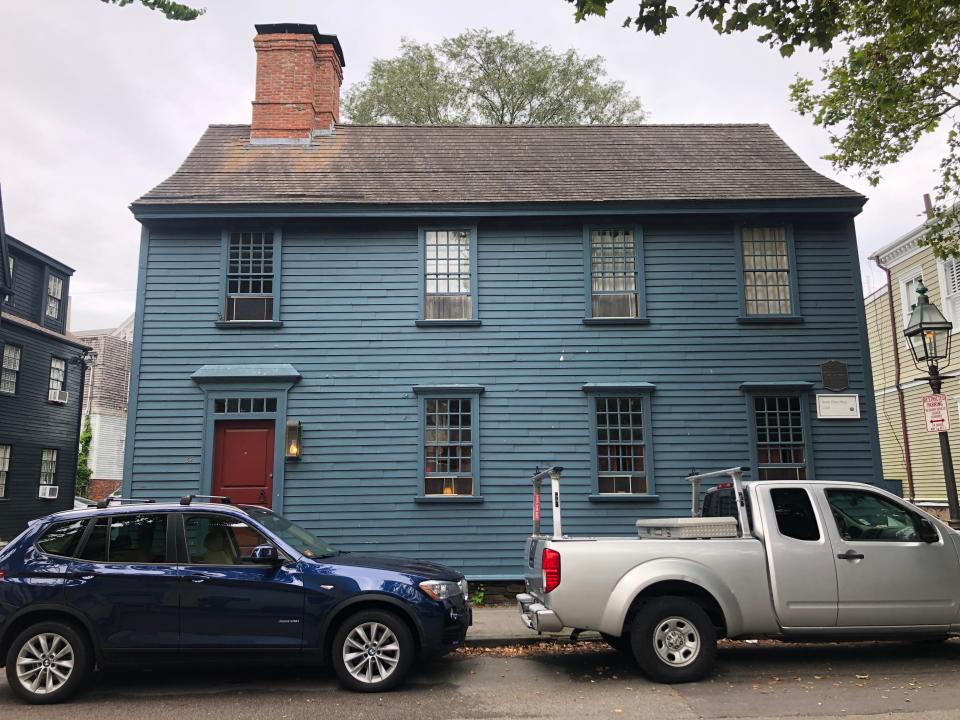
Another home owned by a local nonprofit, the Simon Pease House was purchased by the Newport Restoration Foundation in 1969 and restored in 1971.
The Simon Pease House is one of the oldest properties in the Newport Restoration Society’s collection, but it is just one of over 70 properties owned by the society in general, several of which were built before 1776, including the David Bramen Sr. House on Thames Street (1706), the Odlin-Otis House on Spring Street (1705), The Langley-King House on Pelham (1710), and the Dr. Charles Cotton House (1720).
This article originally appeared on Newport Daily News: Newport, RI's, oldest homes date back to Colonial era

